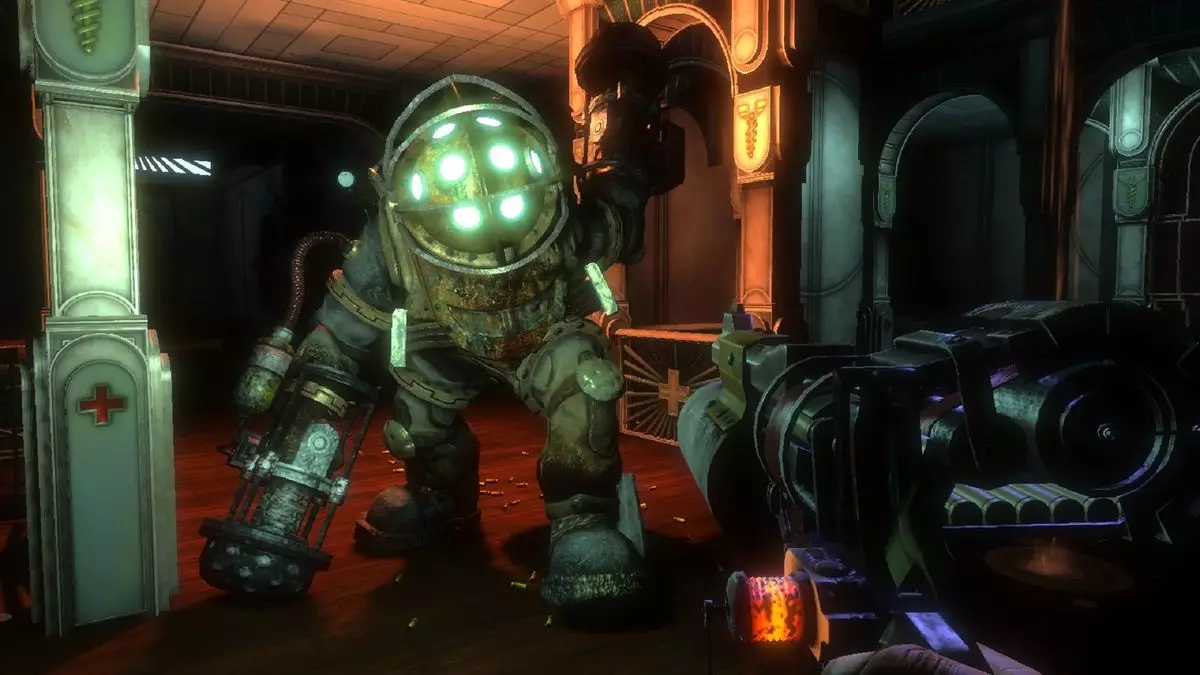In an industry often marked by nostalgia for iconic franchises, it’s rare to witness a game developer openly critique their celebrated work. Ken Levine, the mastermind behind the BioShock series, recently did just that. In a candid discussion with Gameindustry.biz, he referred to his past creations as “basically a corridor,” seeking to delineate the significant evolution of his upcoming project, Judas. This notable shift in perspective invites both intrigue and skepticism, particularly for fans of the original BioShock titles.
Levine’s metaphor of the BioShock games as an elongated corridor suggests a gameplay structure that, while rich in atmosphere and narrative, ultimately funneled players through a linear experience. Indeed, players enjoyed immersive storytelling and complex environments, but the gameplay often adhered to a fixed trajectory—one that would not diverge significantly based on player choice. This critique unveils a larger question regarding the nature of player agency in gaming: how much control should players have over their narrative experiences?
In contrasting Judas with its predecessors, Levine emphasizes a more dynamic approach. He envisions a game world where characters react to an array of player actions in real time, allowing for a more organic experience that matches each player’s unique decisions. While this ambition is undoubtedly commendable, it raises the stakes for game development—creating a responsive environment requires meticulous planning and an intricate narrative framework that accounts for countless player variables.
The challenge of making Judas not just a reactive game but a reflective one lies in the developers’ ability to foresee the myriad ways players can interact with the world. Levine indicated that characters within Judas will observe and comment on a range of player behaviors, recording their choices and emotions in ways that enhance the narrative fabric. This level of detail indicates an ambitious design philosophy whereby interactions are less scripted and more emergent, shaping personal stories rather than a one-size-fits-all narrative.
Yet, the question lingers: can such a vast spectrum of interactions be cohesively integrated into a compelling game? The complexity of tracking player decisions and creating differentiated responses requires not only a robust technical infrastructure but also a significant creative effort from the writing team. Responding organically to player choice without feeling contrived is a monumental task—one that has historically been a stumbling block for many developers aspiring to create living, breathing game worlds.
As anticipation builds for Judas, fans are keenly aware that Levine’s ambitions could redefine the relationship between player choice and story. With gameplay being compared to exploring a vast, intricate ship inhabited by complex characters, the expectations for this project are high. If successful, Judas could signify a new chapter in interactive storytelling, blending the immersive qualities of BioShock with a more personalized and adaptive gameplay experience.
As the gaming community awaits its release, the enthusiasm surrounding Judas captures a renewed hope in narrative-driven gaming. While the legacy of BioShock remains firmly planted in the hearts of fans, judicious innovations crafted by Levine and his team could pave the way for future titles—offering a richer tapestry of stories woven from the unique threads spun by each player’s journey.

